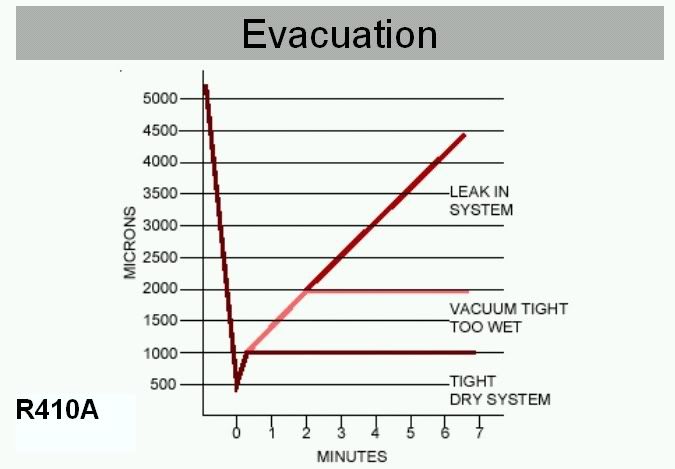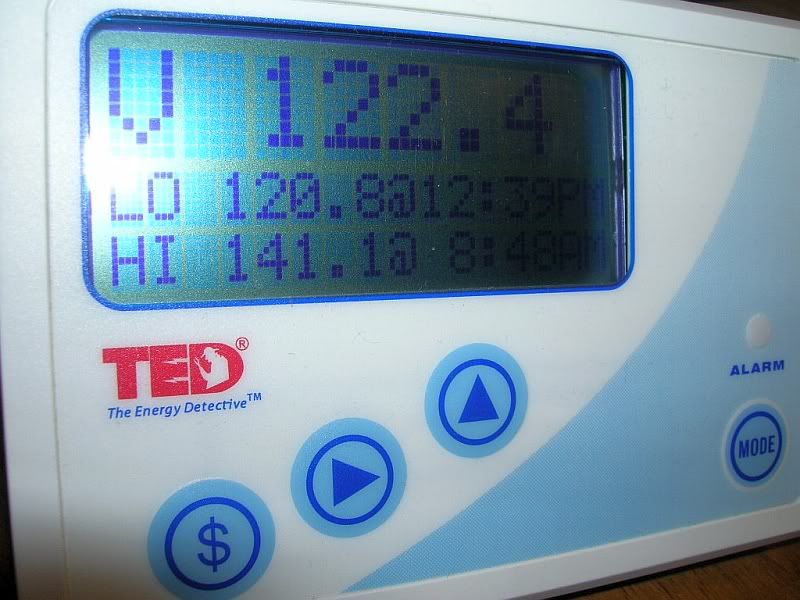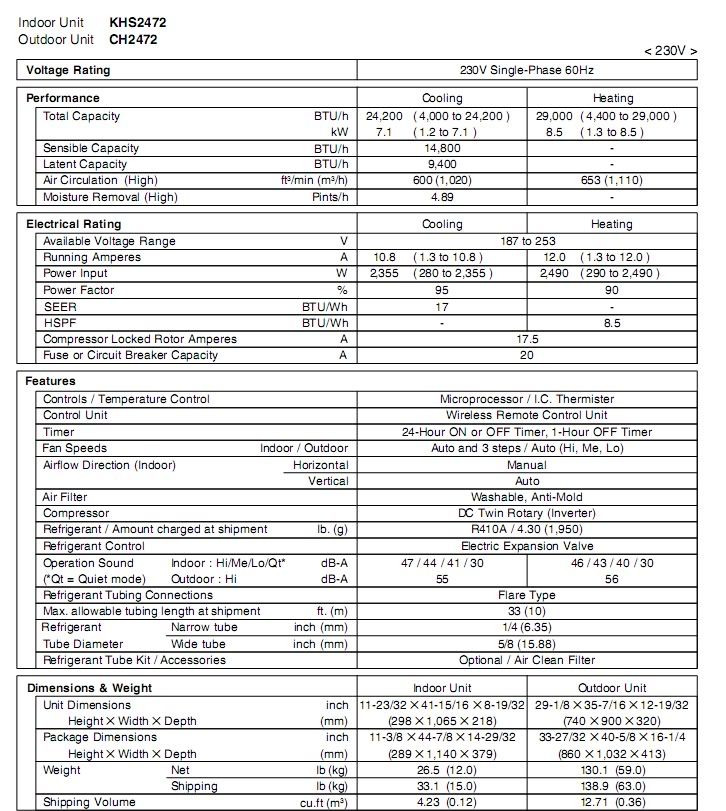
 |
|
|
#441 |
|
Lex Parsimoniae
Join Date: Feb 2009
Location: Woburn, MA
Posts: 4,918
Thanks: 114
Thanked 250 Times in 230 Posts
|
But, what happens if 300 or 400 PSI of nitrogen pressure is added to the system?
When the normal idle pressure of R410A should be 100 to 200 PSI? Would the R410A absorb the nitrogen and drop the system pressure? Another small worry is a pressure test where a good purge wasn't done. That means that moist air (with it's oxygen etc) is pressurized inside the line-set. If there was any back-leakage of a valve, the contaminated 'air' could get into the R410A. I'm thinking that loading nitrogen into a pre-vacuumed line-set is a good idea. Or, loosening the liquid line flare nut and doing a good purge of the lines (and indoor unit) before, re-tightening the flare and pressurizing the loop. Most likely, I'm needlessly worried. But when I look at valves that are designed to keep pressure inside, I wonder about their ability to stop pressure that's coming from the other direction. From the outside. One thing that bears watching: When you removed the valve caps on a brand new system, did you happen to hear a little hiss of R410A?  Last edited by Xringer; 10-12-11 at 02:27 PM.. |
|
|

|
|
|
#442 |
|
Lurking Renovator
Join Date: Sep 2011
Location: NJ
Posts: 27
Thanks: 0
Thanked 1 Time in 1 Post
|
It seems like common practice is < 200 lbs for the pressure test and this might be the reason why. Of course I've seen two manufacturers' instructions that say run it up to 600 lbs.
So on this note...any suggestions on the cheapest road to doing the pressure test? Cheapest price I've found on a 20 cf tank filled + purge regulator is about $200. I was tempted to skip this test since I'm not brazing and flaring (linesets are pre-made and I'm coiling up the excess). After reading AC Hacker's DIY thread and considering our earlier discussion about vacuum gauge/testing I've changed my mind...def. want to pressure test before pulling the pin on the refrigerant!  |
|
|

|
|
|
#443 |
|
Lex Parsimoniae
Join Date: Feb 2009
Location: Woburn, MA
Posts: 4,918
Thanks: 114
Thanked 250 Times in 230 Posts
|
In the manual, there should be a little section telling you to do a little pressure test, using R410a..
Here's how to do it the XRinger way.  With a quick shut off (90deg) line valve on the service connection: Looks like this and fits on your service port, or is on the hose connected to your plain Mini-split service port adapter.  1. Vac the heck out of the line set and indoor unit. 2. Once you are happy with the way your pump is holding the vac down under 200 microns for at least 20 minutes (or an hour).. Get ready to stop the pump. But not yet.. 3. Insert the hex key (came with your system) into the large line valve (put the key all the way in to the bottom). 4. With your right hand on the hex key, Put your left hand on the 90deg shut off valve. 5. Listen to the sound of the pump, as you turn the Hex key CCW. 6. When the sound of the pump changes, close the 90deg shut off with your left hand. 7. After 2 seconds (with the hex key 1/4 turn open), turn the Hex CW and quickly shut off the R410a release. (If there is a leak, the loss of R410A will be very small). 8. Quickly turn off the pump.. 9. Grab your liquid soap sprayer (or paint bush) and coat the flare fittings with a soap film. Look for bubbles. Do the same with the indoor unit's flares. 10. If you see bubbles, carefully tighten up on the flare nut. If it the bubbles don't stop. There is a problem with the flare, something on the copper mating face like a crack or split etc. Some R410A will be lost. Just let it go and fix the problem. Restart the process. ~~~~ Now is the time to do some hiss tests. Get down to where you can listen to the R410A flow in from the large valve and open it for 20 seconds. Any hissing sound will stop in a few seconds. After you close it, let the system sit for 4 hours and repeat. If there is an unseen leak, R410A in the loop will have leaked out and the next time you open the hex key valve, there will be a hissing sound. (And if the indoor and outdoor temperature are not the same, the pressure unequal, there might be a very small hiss, even without any leak). Everything cool? Open both valves (to their stops) and replace their covers (add snot on the mating surfaces). Use your gloves and quickly remove the adapter from the service port. (Make sure you don't accidentally open the 90deg valve). ~~~ Never loosen the flares without doing the Pump-Down operation first. It's easy to do and you won't spill a drop of R410A.. But, if you do get a leak in the line set, shut off both hex key valves and let the line-set leak out. You can't stop it. But you can minimize it by acting quickly. You do not want to pump-down when there is a leak in the line set. That would likely suck air into the leak hole and into your system. (Killing all your R410A). Since a pump-down will leave a light vacuum in your line set.. But, if you are really worried about global warming, then go ahead and do the pump down (saving the planet?), repair the leak and call your AC man to come recover and replace your R410A charge. Cheers, Rich Last edited by Xringer; 10-12-11 at 08:37 PM.. |
|
|

|
|
|
#444 |
|
Lex Parsimoniae
Join Date: Feb 2009
Location: Woburn, MA
Posts: 4,918
Thanks: 114
Thanked 250 Times in 230 Posts
|
Pre-test the hoses on the pump with a micron gauge.
If you take the hoses down under 500 microns, seal off the pump and shut it down, you should see an increase only up to 1000, where it should hold. If the hoses won't hold at 1000 microns for 6 minutes, they won't work very well for checking your line set.. Or preparing it for the refrigerant.  If you hoses do hold under 1000, then you can be more confident your vacuum pump is really cleaning up your line set. ~~ If your copper line set holds at <1000, (when it's not too cold outdoors) there is no H2O left in those lines to vaporize..  PS: In general, this information comes from HVAC people who posted it on the web, and my own limited experience. I'm pretty sure it's accurate, but you should use due-diligents anyway. |
|
|

|
|
|
#445 |
|
Lex Parsimoniae
Join Date: Feb 2009
Location: Woburn, MA
Posts: 4,918
Thanks: 114
Thanked 250 Times in 230 Posts
|
It's winter again! And NStar has jacked up their grid voltage again!
 Heck, 122.4 means 244.8 is the 'normal' AC power supply! But, that's inside the 187-253 volt range in the spec.  I checked the new surge suppressor and both LEDs are still on.. It didn't get smoked..  |
|
|

|
|
|
#446 |
|
Lurking Renovator
Join Date: Sep 2011
Location: NJ
Posts: 27
Thanks: 0
Thanked 1 Time in 1 Post
|
So I decided to do the nitrogen pressure test anyway. The cowboy way probably would have worked, but I really only want to release the refrigerant once!
 Question...do you know where I can find an adapter for the 7/16" 20 fitting coming off my regulator on the nitrogen tank? I need to connect this to my 1/4" fitting on my refrigerant hose. I've been able to find most everything else on ebay or the common online HVAC supply stores except this. Question...do you know where I can find an adapter for the 7/16" 20 fitting coming off my regulator on the nitrogen tank? I need to connect this to my 1/4" fitting on my refrigerant hose. I've been able to find most everything else on ebay or the common online HVAC supply stores except this. |
|
|

|
|
|
#447 |
|
Lex Parsimoniae
Join Date: Feb 2009
Location: Woburn, MA
Posts: 4,918
Thanks: 114
Thanked 250 Times in 230 Posts
|
It's not too cowboy, a lot of folks around the world use the R410A pressure test.
Actually, some of them who don't have a vac pump, try to flood out the air in the line-set with R410A, then crank down the loosened flare.. And they crank-er up! Don't know how long the system lasts after that..  Anyways, I used paint ball fittings and have no clue where to get 7/16-20 fittings.. Maybe Hydraulics Equipment, Hydraulic System Components - Grainger Industrial Supply Grainger has been my supplier for all sorts of stuff over the years.. |
|
|

|
|
|
#448 |
|
Lurking Renovator
Join Date: Sep 2011
Location: NJ
Posts: 27
Thanks: 0
Thanked 1 Time in 1 Post
|
After just over a month of cobbling tools & supplies, I've got everything except the electrical supplies. I just sent a PM to the moderator to ask permission to create a tools/supplies thread for a DIY install. If anybody should need anything, send me a PM. Only thing I don't have at this point is recovery equipment.
Meanwhile, I finally started doing the work this weekend. I spent some time yesterday practicing flares and setting 3 chemical anchors into the concrete block behind my garage (for the condensor mounting bracket to hang on). I'm hoping I find the time over the next two weeks to get er up and running! Hopefully you won't see any "OMG what do I do now?" posts! Oh, I got my regulator the other week, and it seems like my 1/4" charging hose fits on it just fine. Still waiting for the gas place to refill my nitrogen tank, but I think I'm okay on that end. |
|
|

|
|
|
#449 |
|
Lex Parsimoniae
Join Date: Feb 2009
Location: Woburn, MA
Posts: 4,918
Thanks: 114
Thanked 250 Times in 230 Posts
|
"Only thing I don't have at this point is recovery equipment."?
I hope you are just joking about buying that stuff.. You can buy a nice mini-split for the price of some of that gear..  The pump-down feature on the Sanyo systems is the only 'recovery' that most DIYers will ever need. I can't think of any application where I would need to completely remove the R410A, except if I decided to try out some R290.. 
__________________
My hobby is installing & trying to repair mini-splits EPA 608 Type 1 Technician Certification ~ 5 lbs or less.. |
|
|

|
|
|
#450 |
|
Lurking Renovator
Join Date: Sep 2011
Location: NJ
Posts: 27
Thanks: 0
Thanked 1 Time in 1 Post
|
Oh h*ll no! If something goes so wrong that I need to go down that road, I already have the tool for that - my phone!
|
|
|

|
 |
| Tags |
| air conditioner, diy, heat pump |
|
|